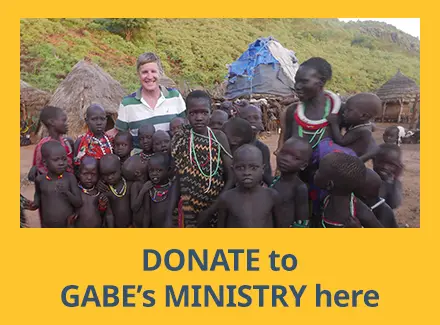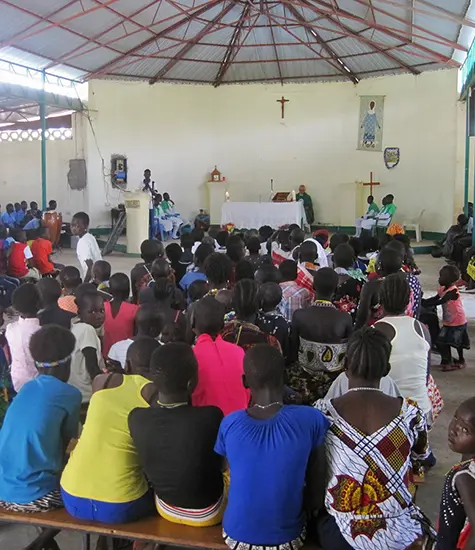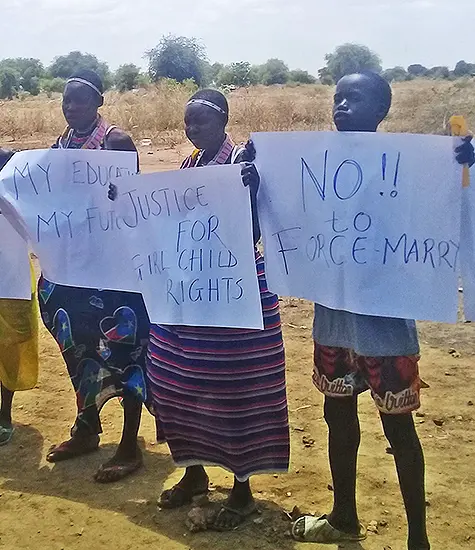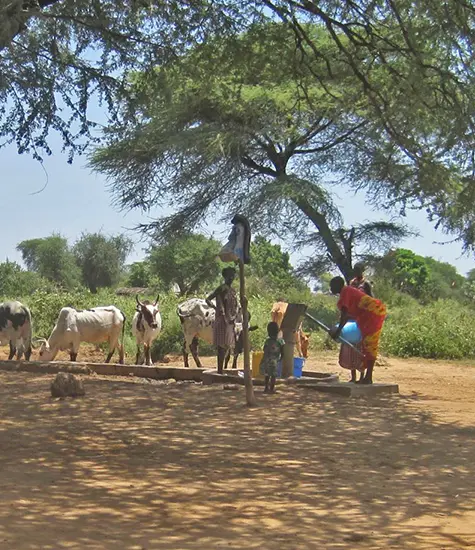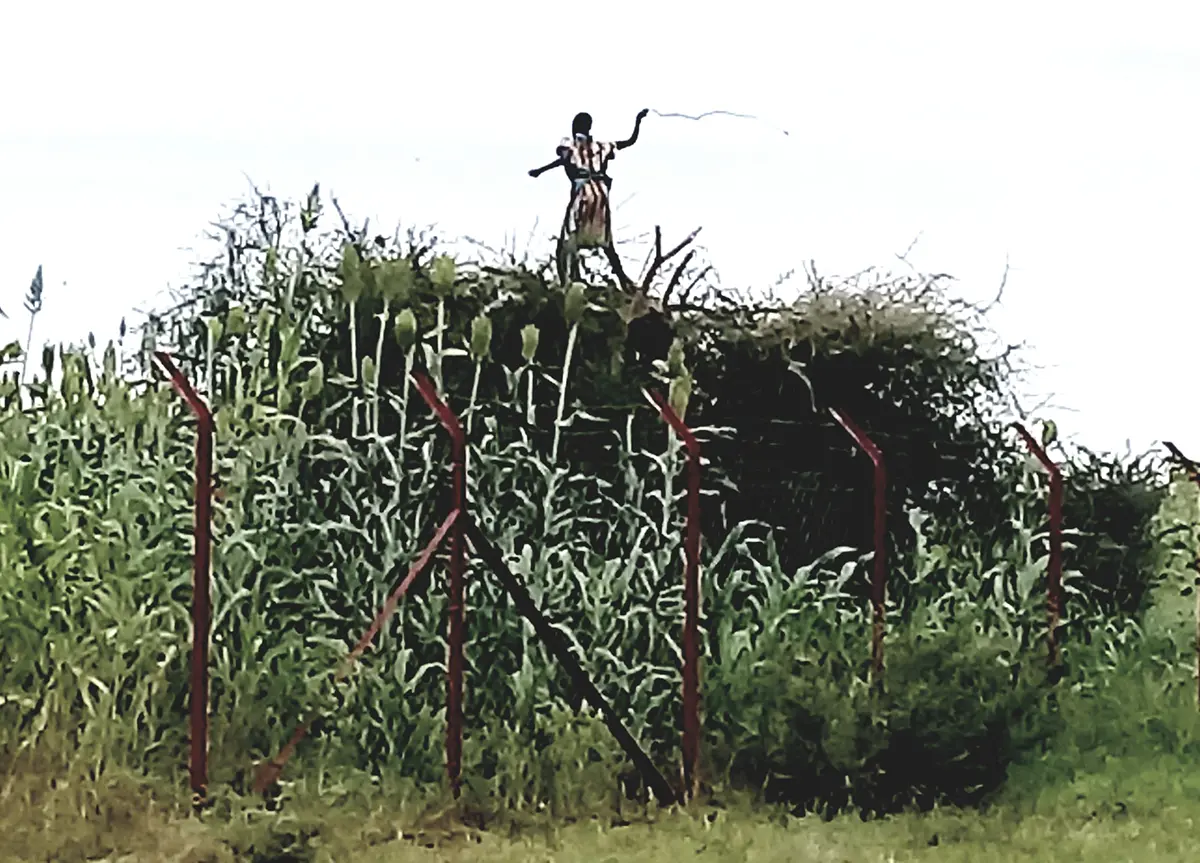
A child whips balls of clay to chase birds away from a sorghum field.
Good planning and hard work lead to prosperity, but hasty shortcuts lead to poverty (Proverbs 21:5).
Sorghum is a most incredible plant. It can survive in this harsh semi-arid environment where other crops fail. Sorghum can resist pests and diseases that ravage other crops like maize or cassava. If the rains are delayed, shorter than usual or even harsher than usual (which, by the way, has been the reality for the past three years), this sorghum somehow survives.
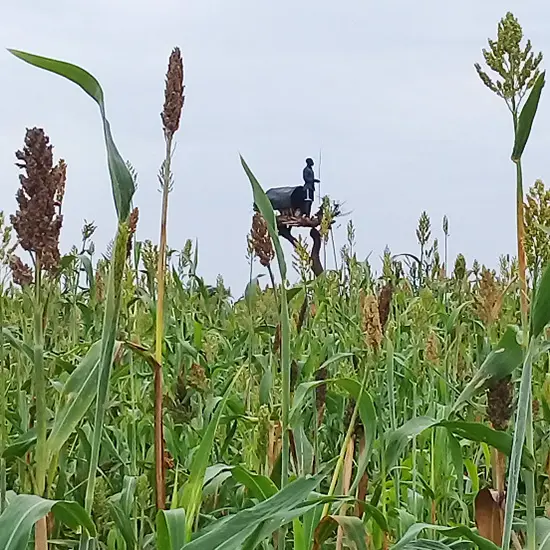
A ‘bird chaser’ on his stand at the edge of a sorghum field.
In fact, there is really only one predator that can damage the entire crop in a short time: birds.
These are small sparrow-like birds that congregate in the hundreds. They will alight in a sorghum field and feast on the seeds and the juice from the stalks, which feed the seed development. Of course, if left unchecked, this will eliminate the farmer’s main source of food. What can be done?
Having no other means, no support from government extension agents, no pesticides and no access to advanced technologies, there are few options left to the Toposa farmers. They build rudimentary stands in their fields and tell their young children to stand in the fields all day long.
I call these children the “bird chasers.”
These 6- to 10-year-old boys and girls end up standing on a platform all day in the hot sun, shouting and yelling every time a bird comes by. They have to be at their post from 6 a.m. until sunset around 7 p.m. No wonder so many children miss school when the harvest is almost ready for collection. They are in those fields seven days a week for about a month. Adults take their turn too, but mostly I see youth doing this most dreary of tasks.
The bird chasers have to be alert and aggressive. They rarely have shade, and many of these children simply drape a cloth over their heads as the only protection against the searing sun. Many times the children will rotate positions so that it is less boring, and they might get a stand that actually has a little thatch covering to crawl under to get out of the heat.

Top: Women thresh sorghum. Below: St. Mary Primary School students clean sorghum.
They use a willow stick as a weapon against the birds. By placing a small ball of clay on the end, they can whip that clay bullet quite a way across the field. I watched one boy for some time and was amazed at how accurate he was with the thing. Other “bird chasers” bang on pots or pans. Others have a whistle or other noise maker, but most simply shout and shout and threaten and curse the birds. By the end of the day, you can imagine the sore throats and exhausted children.
As I teach my classes, we can hear the hoarse shouts of these children echoing across the fields and trying desperately to protect their valuable crop. Each head of sorghum lost means no food for that child for a day. What a way to spend the time.
I wonder what the future of these children will be when it is so vital for them to prevent the birds from eating their food for the next year?


